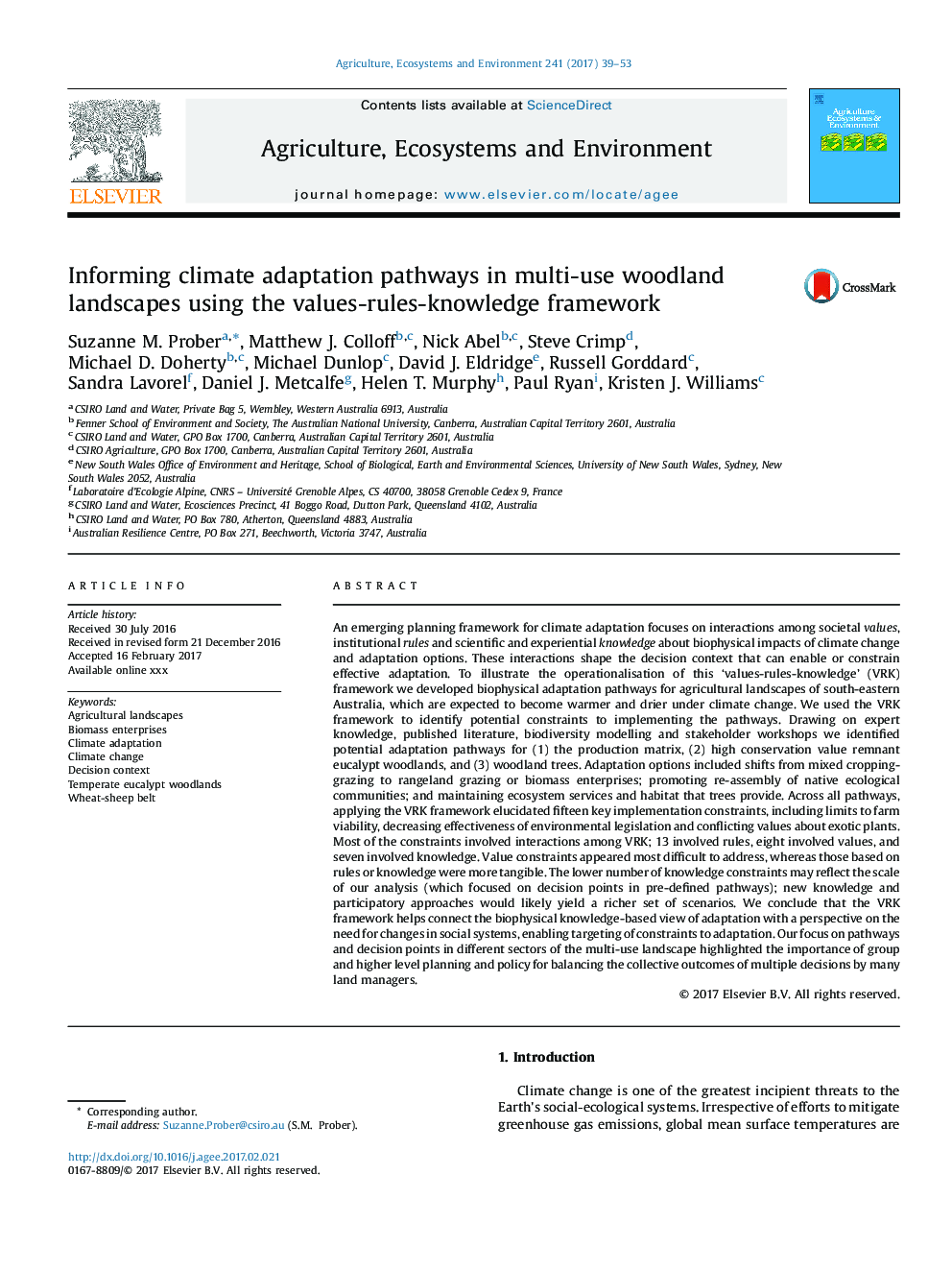| کد مقاله | کد نشریه | سال انتشار | مقاله انگلیسی | نسخه تمام متن |
|---|---|---|---|---|
| 5538255 | 1552011 | 2017 | 15 صفحه PDF | دانلود رایگان |
عنوان انگلیسی مقاله ISI
Informing climate adaptation pathways in multi-use woodland landscapes using the values-rules-knowledge framework
ترجمه فارسی عنوان
اطلاع رسانی مسیرهای سازگاری با محیط زیست در مناظر چند منظوره جنگل با استفاده از چارچوب ارزش ها، قوانین و دانش
دانلود مقاله + سفارش ترجمه
دانلود مقاله ISI انگلیسی
رایگان برای ایرانیان
کلمات کلیدی
مناظر کشاورزی، شرکت های زیست توده، سازگاری آب و هوا، تغییر آب و هوا، زمینه تصمیم گیری، جنگل های اکالیپتیک درجه حرارت، کمربند گوشت گاو،
موضوعات مرتبط
علوم زیستی و بیوفناوری
علوم کشاورزی و بیولوژیک
علوم زراعت و اصلاح نباتات
چکیده انگلیسی
An emerging planning framework for climate adaptation focuses on interactions among societal values, institutional rules and scientific and experiential knowledge about biophysical impacts of climate change and adaptation options. These interactions shape the decision context that can enable or constrain effective adaptation. To illustrate the operationalisation of this 'values-rules-knowledge' (VRK) framework we developed biophysical adaptation pathways for agricultural landscapes of south-eastern Australia, which are expected to become warmer and drier under climate change. We used the VRK framework to identify potential constraints to implementing the pathways. Drawing on expert knowledge, published literature, biodiversity modelling and stakeholder workshops we identified potential adaptation pathways for (1) the production matrix, (2) high conservation value remnant eucalypt woodlands, and (3) woodland trees. Adaptation options included shifts from mixed cropping-grazing to rangeland grazing or biomass enterprises; promoting re-assembly of native ecological communities; and maintaining ecosystem services and habitat that trees provide. Across all pathways, applying the VRK framework elucidated fifteen key implementation constraints, including limits to farm viability, decreasing effectiveness of environmental legislation and conflicting values about exotic plants. Most of the constraints involved interactions among VRK; 13 involved rules, eight involved values, and seven involved knowledge. Value constraints appeared most difficult to address, whereas those based on rules or knowledge were more tangible. The lower number of knowledge constraints may reflect the scale of our analysis (which focused on decision points in pre-defined pathways); new knowledge and participatory approaches would likely yield a richer set of scenarios. We conclude that the VRK framework helps connect the biophysical knowledge-based view of adaptation with a perspective on the need for changes in social systems, enabling targeting of constraints to adaptation. Our focus on pathways and decision points in different sectors of the multi-use landscape highlighted the importance of group and higher level planning and policy for balancing the collective outcomes of multiple decisions by many land managers.
ناشر
Database: Elsevier - ScienceDirect (ساینس دایرکت)
Journal: Agriculture, Ecosystems & Environment - Volume 241, 1 April 2017, Pages 39-53
Journal: Agriculture, Ecosystems & Environment - Volume 241, 1 April 2017, Pages 39-53
نویسندگان
Suzanne M. Prober, Matthew J. Colloff, Nick Abel, Steve Crimp, Michael D. Doherty, Michael Dunlop, David J. Eldridge, Russell Gorddard, Sandra Lavorel, Daniel J. Metcalfe, Helen T. Murphy, Paul Ryan, Kristen J. Williams,
